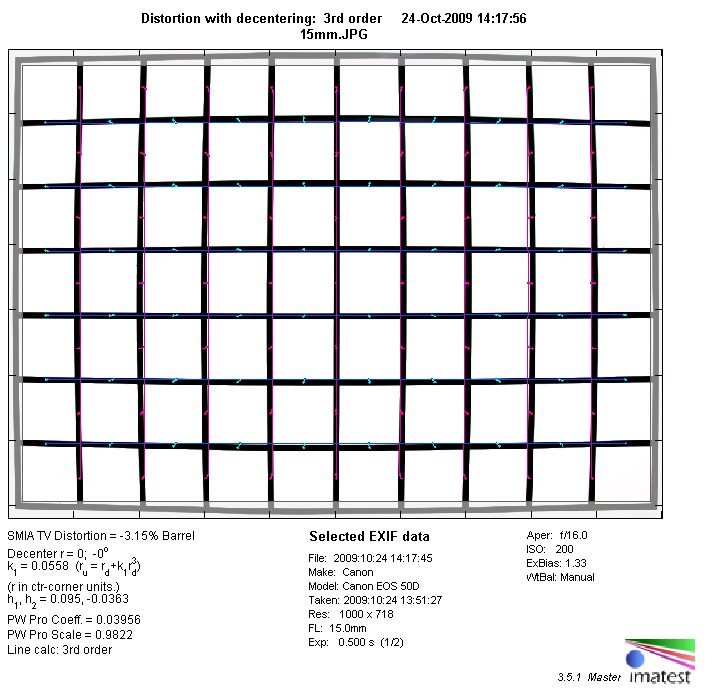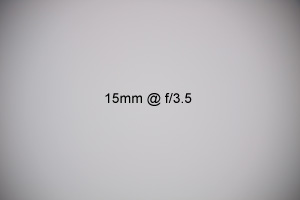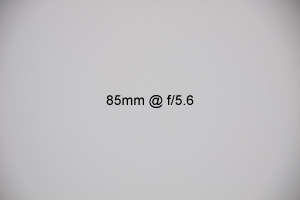|
Canon EF-S 15-85mm f/3.5-5.6 USM IS - Review / Lens Test Report - Analysis |
|
Lens Reviews -
Canon EOS (APS-C)
|
|
Page 2 of 3

Distortion
The EF-S 15-85mm produces a heavy degree of barrel distortion at 15mm (3.15%). While this may be somewhat disappointing it's simply normal for such lenses. The problem is much less pronounced with less than 1% distortion at the other tested focal lengths.
|
Move the mouse cursor over the focal length text marks below to observe the respective distortion
|
| 15mm |
24mm |
50mm |
85mm |

|
The chart above has a real-world size of about 120x80cm.
Vignetting
The Canon lens has a fairly large front lens diameter. Normally this should translate to well-controlled vignetting but the EF-S 15-85mm has significant problems at large aperture settings unfortunately. The worst spot is, as always, the wide-end with a rather extreme vignetting of ~1.9EV at f/3.5 (which is outside of our standard scale actually). This is easily visible in most field situations. The vignetting improves at f/5.6 but it takes f/8 till the problem is more or less resolved. Other focal lengths are not as affected but you should still reckon with about 1EV of vignetting here at max. aperture.

Here're sample illustrations (actual images) to show the worst case scenarios:


MTF (resolution)
The resolution characteristic of the EF-S 15-85mm IS is quite impressive at most focal lengths. The sweet spot is located in the wider portion. The center resolution is exceptionally high at 15mm and 24mm and the borders and even the corners remain on a very good level throughout the tested aperture range. There's a drop in border performance at 50mm with only good results @ f/5. However, stopping down boosts the quality towards very good levels again. 85mm is the weakest setting with only good borders although the center resolution remains very decent.
The tested sample showed a bit of a centering problem here and there. A "golden" sample may perform somewhat better. Centering defects tend to show up as local focus shifts which are pretty much compensated by the testing procedure. Please note that IS lenses are generally more prone to centering defects compared to conventional lenses.
Please note that the MTF results are not directly comparable across the different systems!
Below is a simplified summary of the formal findings. The chart shows line widths per picture height (LW/PH) which can be taken as a measure for sharpness.
If you want to know more about the MTF50 figures you may check out the corresponding Imatest Explanations
Chromatic Aberrations (CAs)
The level of lateral CAs (color shadows at harsh contrast transitions) is a bit of a problem at 15mm and slightly more so at 85mm. The peak CA width can reach about 1.8px at the image borders and the problem gets worse in the corners (not shown in the figure below). The CAs are very well controlled in the middle range.
It is worth to note that Canon DPP supports a CA auto-correction so if you're shooting RAW this should not be a big issue.

|